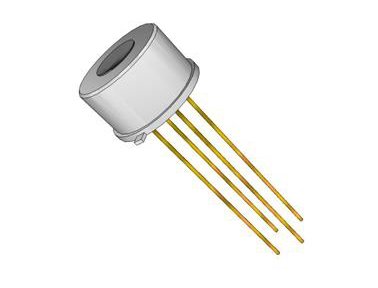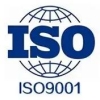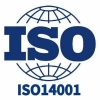Capacitive sensors: ideal for solving environmental challenges

In today's era of rapid technological development, environmental protection and sustainable development are of special concern to the world. All walks of life are thinking about solutions that can be implemented, among which capacitive sensors are particularly eye-catching because of their unique and superior performance. Capacitive sensors, as an efficient and accurate measurement tool, have been widely used in many fields, especially in environmental monitoring and industrial automation, which has great potential.
How does capacitive sensor work
Capacitive sensors work mainly according to changes in capacitance. When the object to be measured by the sensor, such as a gas, a liquid or a solid substance, is near the electrode of the sensor, the value of the capacitance will change accordingly. A circuit in the sensor converts this change into an electrical signal, which allows precise measurements of physical quantities such as pressure, humidity, temperature, and so on. Compared with other types of sensors, capacitive sensors have higher sensitivity and good stability, so they perform quite well in many application scenarios.
Application in environmental monitoring
In the field of environmental monitoring, capacitive sensors are particularly ideal for applications such as weather stations, air quality monitoring, and water pollution detection due to their non-contact and high accuracy. By monitoring the humidity, temperature and pollutant content in the environment in real time, capacitive sensors can provide government departments, research institutions and enterprises with particularly important data support, which can be helpful to better formulate and implement environmental protection policies.
Take air quality monitoring for example, capacitive sensors can effectively detect the concentration of small particles, such as PM2.5 and PM10, and provide continuous monitoring data. These data not only allow people to understand the air quality of their surroundings in real time, but also provide an important basis for urban planning, industrial emissions supervision and other aspects.
Key applications in industrial automation
In industrial production, capacitive sensors are also widely used. They are useful in liquid level detection, material flow monitoring and temperature control. These sensors can monitor the production process in real time, ensure the normal operation of the equipment, and can also achieve automatic control through data feedback.
For example, liquid level measurement, traditional liquid level detection methods are susceptible to liquid characteristics, temperature changes and so on these factors, but capacitive sensors, it can accurately determine the height of the liquid level by measuring the change in capacitance value. This efficient and reliable measurement method can greatly improve production efficiency, but also reduce the economic loss caused by equipment failure.
The advantages of adapting to a variety of environments
Capacitive sensors have many advantages, can adapt to complex environments, even in very harsh industrial environments can work properly. For example, it is highly resistant to temperature changes, dust, moisture, and chemicals. The housing of capacitive sensors is usually made of highly protective materials, which allows it to maintain stable performance in highly corrosive or particularly extreme temperature environments. Because of this, capacitive sensors have been widely used in chemical, power, food processing and other industries.
Improved accuracy and sensitivity
Capacitive sensors also have a particularly obvious advantage, that is, their accuracy and sensitivity are extremely high. Because it works by changes in electric fields, it can detect particularly small changes. This is important for environmental monitoring and industrial process control, which require precise control. For example, in the biomedical field, capacitive sensors can be used to monitor the physical properties of biological samples in real time, enabling high-precision diagnosis and analysis.
Energy saving and environmental protection advantages
With the increasing global focus on sustainability, the low-energy characteristics of capacitive sensors are more attractive. Capacitive sensors consume less power than other types of sensors, making them more economical in environments where continuous operation is required. In addition, many capacitive sensors also pay attention to environmental protection in the choice of materials, will use recyclable, degradable materials, thereby reducing the burden on the environment.
Future development trend
With the development of smart devices and the Internet of Things getting faster and faster, the future potential of capacitive sensors is huge. In smart home, smart city, smart manufacturing and other scenarios, capacitive sensors as an important tool for data acquisition will play an increasingly important role. When combined with cloud computing, big data analytics and artificial intelligence technologies, capacitive sensors promise to enable more intelligent and automated environmental monitoring and management.
And with the continuous progress of technology, the cost of capacitive sensors is also expected to be further reduced, so as to play a role in more application scenarios. Whether in the construction of urban infrastructure or in new environmental projects, capacitive sensors will be ideal for promoting sustainable development.
Conclusion
The wide application of capacitive sensors fully shows its strong ability in environmental monitoring and industrial automation. Whether in complex industrial environments or in environmental areas requiring high-precision monitoring, capacitive sensors can bring real value to businesses and society with their unique performance. With the continuous development of technology and more and more application scenarios, capacitive sensors will undoubtedly become an important helper to solve environmental challenges.
The Products You May Be Interested In
 |
62054-P2S02 | XFRMR TOROIDAL 15VA CHAS MOUNT | 3526 More on Order |
 |
62045-P2S02 | XFRMR TOROIDAL 10VA CHAS MOUNT | 2430 More on Order |
 |
62044-P2S02 | XFRMR TOROIDAL 10VA CHAS MOUNT | 6048 More on Order |
 |
62043-P2S02 | XFRMR TOROIDAL 10VA CHAS MOUNT | 5472 More on Order |
 |
62035-P2S02 | XFRMR TOROIDAL 7VA CHAS MOUNT | 6642 More on Order |
 |
62034-P2S02 | XFRMR TOROIDAL 7VA CHAS MOUNT | 7938 More on Order |
 |
62025-P2S02 | XFRMR TOROIDAL 5VA CHAS MOUNT | 3924 More on Order |
 |
62012-P2S02 | XFRMR TOROIDAL 3.2VA CHAS MOUNT | 3204 More on Order |
 |
62075-P2S02 | XFRMR TOROIDAL 35VA CHAS MOUNT | 7308 More on Order |
 |
62073-P2S02 | XFRMR TOROIDAL 35VA CHAS MOUNT | 5292 More on Order |
 |
70074K | XFRMR TOROIDAL 35VA THRU HOLE | 6840 More on Order |
 |
70054K | XFRMR TOROIDAL 15VA THRU HOLE | 4716 More on Order |
 |
70031K | XFRMR TOROIDAL 7VA THRU HOLE | 8658 More on Order |
 |
70015K | XFRMR TOROIDAL 3.2VA THRU HOLE | 7578 More on Order |
 |
70014K | XFRMR TOROIDAL 3.2VA THRU HOLE | 5562 More on Order |
 |
70011K | XFRMR TOROIDAL 3.2VA THRU HOLE | 7560 More on Order |
 |
70002K | XFRMR TOROIDAL 1.6VA THRU HOLE | 5040 More on Order |
 |
62024-P2S02 | XFRMR TOROIDAL 5VA CHAS MOUNT | 4824 More on Order |
 |
62084-P2S02 | XFRMR TOROIDAL 50VA CHAS MOUNT | 7284 More on Order |
 |
62060-P2S02 | XFRMR TOROIDAL 25VA CHAS MOUNT | 23778 More on Order |
 |
70034K | XFRMR TOROIDAL 7VA THRU HOLE | 8088 More on Order |
 |
70005K | XFRMR TOROIDAL 1.6VA THRU HOLE | 7218 More on Order |
 |
AC1200 | CURR SENSE XFMR 200A T/H | 2142 More on Order |
 |
AC1010 | CURR SENSE XFMR 10A T/H | 5963 More on Order |









